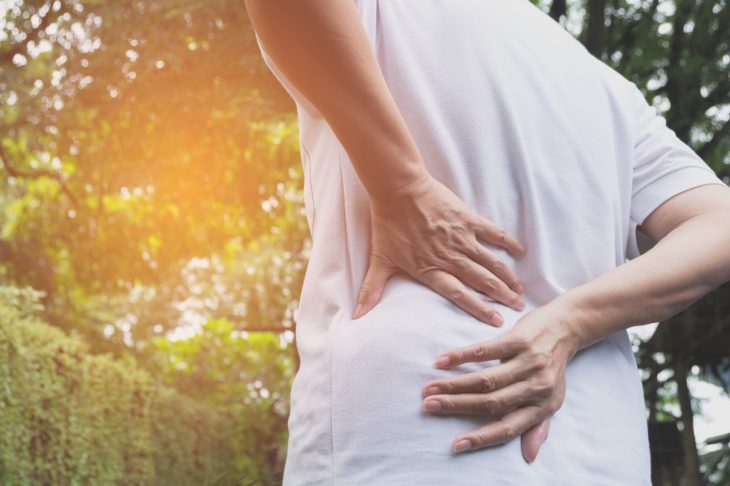
The Top 4 Causes of Back Pain and How They are Treated
If you suffer from back pain, you’re not alone. According to the National Institute of Health (NIH), back pain is one of the most common medical conditions in the United States. Fortunately, a number of non-surgical treatment options are available.
According to Dr. Todd F. VanderHeiden, a board-certified orthopedic spinal surgeon at Panorama Orthopedics, surgery for back pain should not be the first option. Many conditions that cause back pain get better by themselves within weeks to months. As a reference point, fewer than ten percent of all spine patients seen at Panorama Orthopedics require back surgery.
Here are the top 4 reasons people suffer from back pain along with their treatment options:
1. Lumbar Strains and Sprains: common soft tissue injuries that may require a long time to heal, even with treatment. Strains occur when you stretch the muscles and/or tendons in your back abnormally. Sprains occur when you stretch a ligament abnormally. Ligaments are the tough bands of tissue that attach bones to bones and stabilize your back.
Treatment for both strains and sprains are similar – short periods of rest followed by activity such as physical therapy, cardiovascular exercise, stretching and core strengthening to restore mobility. Ice, heat, massage, and traction can also help. Your doctor may also recommend anti-inflammatory medications to relieve your pain. Neither sprains nor strains require surgery.
2. Herniated (“Bulging”) Disc: a condition in which the intervertebraldiscs between the bones of your spine bulge beyond their hard outer shell. When lower back and leg pain (sciatica) occur together, a herniated disc is most often the cause.
Treatment options include exercise, avoiding painful positions, physical therapy, muscle relaxants, over-the-counter pain medications, prescription drugs and corticosteroid injections. Less than two percent of patients require surgery to remove the herniated disc material. This is often done through a minimally invasive approach.
3. Spine Arthritis (Arthritic Disc & Facet Joint): a condition that involves the breakdown of cartilage, the cushioning material between your joints and bones. Because discs function like shock absorbers between your facet joints and bones, breakdown of this cushioning material can cause pain and stiffness, especially when you bend and twist.
Treatment of arthritis often focuses on reducing inflammation and relieving pain through over-the-counter medications, prescription drugs and cortisone or hyaluronic acid injections. Exercise therapy may also be recommended to decrease stiffness and strengthen muscles around the joint. Surgery is only recommended for certain types of facet joint and disc arthritis that affect the stability of the spine.
4. Spine Alignment Problems: the two most common forms of “misalignment” in the spine areconditions calledspondylolisthesis and scoliosis.
Spondylolisthesis is a condition in which one of the bones in your spine (vertebra) slips forward and out of place compared to the adjacent bone. The condition can cause back and leg pain ranging from mild to severe, although many people experience no symptoms.
Treatment includes exercise, physical therapy, anti-inflammatory medications and steroid injections. Surgery may be recommended if less invasive treatments do not provide lasting relief.
Scoliosis is a sideways curvature of the spine that most often occurs in young patients. However, as people age, the degenerative spine can begin to curve and twist due to weakened discs and joints. As the curvature worsens, arthritic pains in the back and sciatic pains in the lower back and legs can develop from narrowing of nerve channels within the spinal column.
Treatment includes all of the previously mentioned non-surgical options. In the proper setting, surgery can be done to correct alignment problems, which address instability of bones, joints and disks. Surgery also relieves nerve compression.
The important thing to remember is that surgery is typically not the first option to relieve any back pain, unless it is the best option. People should never be afraid to reach out and get the care they deserve to live a full and active life!